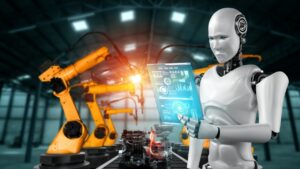The Rise of Smart Cities in a Modern World
As the global population rapidly shifts toward urban areas, cities are being forced to find new and smarter ways to meet the growing demands of citizens. This is where the concept of smart cities emerges—urban environments enhanced by technology to improve efficiency, sustainability, and quality of life.
How Technology Is Transforming Urban Infrastructure
Smart cities rely heavily on connected systems, sensors, data analytics, and artificial intelligence. These technologies work together to manage resources like electricity, water, waste, and transportation. Through automation and real-time adjustments, cities can reduce waste and streamline services for their residents.
Smarter Mobility for Urban Efficiency
One of the most immediate applications of smart city tech is seen in transportation. Intelligent traffic systems, connected traffic lights, real-time public transit tracking, and electric scooter or bike-sharing platforms are all making urban commuting more efficient and eco-friendly. The goal is to reduce traffic congestion, lower emissions, and give commuters more flexible and reliable options.
Making Cities More Sustainable
Sustainability is at the heart of every smart city. Smart energy grids distribute power more efficiently, balancing demand and supply in real time. Solar panels, energy storage systems, and smart meters allow buildings to generate and consume energy intelligently. Waste management systems use sensors to monitor bin levels and adjust pickup schedules accordingly, reducing fuel consumption and labor costs.
Enhancing Public Safety Through Smart Technology
Smart surveillance systems powered by AI and machine learning can detect unusual behaviors, identify emergencies, and send alerts to emergency services. In some smart cities, gunshot detection systems and flood sensors are already helping protect lives and property. Street lighting systems also use motion sensors to provide well-lit public spaces while conserving energy.
Revolutionizing Healthcare Access
Digital health services and remote monitoring tools are making healthcare more accessible in urban environments. Smart cities integrate public health data to identify trends, track disease outbreaks, and offer mobile clinics or online consultations. These advancements are not only convenient but help reduce the strain on traditional healthcare infrastructure.
The Role of the Internet of Things (IoT)
IoT is the backbone of smart cities. From parking sensors to air quality monitors, these connected devices gather valuable data to improve services. Home appliances, city infrastructure, and even personal gadgets all become part of a vast, data-sharing ecosystem aimed at enhancing daily life.
Infrastructure and Connectivity Needs
To function effectively, smart cities require a robust digital infrastructure. This includes high-speed broadband, secure cloud computing, and advanced wireless networks like 5G. These components ensure that vast amounts of data can be transmitted and processed instantly, enabling cities to respond to issues in real time.
Privacy and Cybersecurity Challenges
While data collection is essential to smart city operations, it also raises serious privacy and cybersecurity concerns. Cities must implement secure data storage, ethical usage policies, and transparent governance. Residents must trust that their information is protected from misuse or breaches.
Community Engagement and Inclusion
A truly smart city isn’t just high-tech—it’s people-centered. Involving residents through digital platforms, public feedback channels, and participatory projects is essential. Digital literacy programs and accessible technology must ensure everyone can benefit, regardless of age, income, or education level.
Future Innovations in Urban Living
Smart cities are evolving into experimental hubs for technologies like autonomous vehicles, AI-driven city planning, drone deliveries, and mixed-reality experiences. These advancements aim to further improve convenience, sustainability, and connectivity while opening up new possibilities for economic and cultural development.
The Road Ahead for Smart Cities
The smart city vision is not just a technological dream—it’s a necessity for the future of urban life. By combining innovation with public collaboration and ethical planning, cities can become smarter, safer, and more livable for future generations.
Frequently Asked Questions (FAQ)
What is a smart city?
A smart city uses technology and data to improve infrastructure, services, and the overall quality of life for its residents. It involves intelligent systems in areas like transportation, energy, waste, and communication.
How does a smart city benefit the environment?
Smart cities promote sustainability by using smart grids, renewable energy, energy-efficient buildings, and optimized waste management. These systems help reduce carbon footprints and conserve resources.
Is smart city technology safe?
With proper cybersecurity protocols, encryption, and ethical data practices, smart cities can be both safe and private. However, continuous efforts are required to secure systems from threats and maintain public trust.
Can smaller towns become smart cities?
Yes, any city—big or small—can adopt smart technologies. Many smaller municipalities start with scalable solutions like smart lighting or traffic systems and expand as infrastructure and budget allow.
Do smart cities require 5G networks?
While not mandatory, 5G enhances the performance of smart city applications due to its high speed and low latency, making real-time data processing and automation more efficient.
How are citizens involved in building smart cities?
Residents can participate through digital platforms, mobile apps, and public forums. Their feedback is often used to shape policies, improve services, and ensure technology serves community needs.
Are smart cities expensive to build?
Smart city development involves upfront costs, but it often leads to long-term savings through improved efficiency, reduced resource use, and better service delivery.



